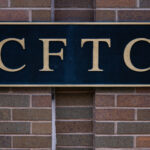NEW YORK — Empty roads in the United States and Europe are tempting drivers to go out and shift into high gear.
From Los Angeles to New York, London and Berlin, coronavirus lockdowns have drained traffic from normally crowded roads. That has opened space for drivers who want to defy police warnings and automated traffic enforcement systems to go racing in the streets. In London and Los Angeles, police said they have clocked drivers zooming down streets at over 100 miles an hour(160 km/h).
Drivers are posting videos on social media to boast of races on empty roads in Mexico and the U.S. states of Arizona and Texas. In addition to the thrill of speeding, some drivers overestimate their abilities and falsely believe that empty roads provide safety, according to police officials.
Vehicle miles traveled, a standard industry metric to measure vehicle volume and trip distances, has dropped in every U.S. county as of early April, according to data by StreetLight Data, a transportation analytics firm.
For a graphic, click here: https://graphics.reuters.com/HEALTH-CORONAVIRUS/AUTOS-TRAFFIC/qmypmyxjpra/TRAFFIC.jpg
At the same time, average speeds measured during the first week of April increased significantly in the five largest U.S. metropolitan areas.
According to data by transportation analytics firm INRIX, the average speed on interstate highways, state highways and expressways in those areas increased by as much as 75% compared to January and February and somewhat or at times significantly exceeded the speed limit.
INRIX transportation analyst Bob Pishue said drivers in some U.S. cities were seizing upon what they see as a once-in-a-lifetime chance to increase speed. “It is unprecedented,” he said.
In New York City, transportation officials reported an increase of more than 60% in the amount of speed camera tickets issued in March compared with the year-ago period. Preliminary city data suggests a similar trend for the first week of April. At the same time, traffic was down more than 90% compared with January in Manhattan, the city’s central borough.
On Bruckner Boulevard in the city’s Bronx borough, a road with a 30 mph speed limit that made up a large share of speeding camera tickets, 5% of drivers traveled faster than 43 mph in the first week of April, according to INRIX data.
In Washington, D.C., where traffic has decreased some 80% in March compared with January, according to StreetLight Data, officials have recorded a 20% jump in March speeding tickets. Of those, violations issued for driving 21-25 mph over the speed limit rose by nearly 40%.
Meanwhile, California Highway Patrol officials in Los Angeles have taken to Twitter, urging road users to slow down by posting images of rollover crashes and wrecked vehicles due to speeding on a nearly daily basis.
“It’s very common now to observe drivers speeding at around 100 mph,” California Highway Patrol officer Robert Gomez said.
The Los Angeles Police Department said it is redeploying its resources, establishing a high-speed street task force to position officers at strategic roads. The city has also changed its traffic signals sequence to avoid long stretches of green lights.
“Even though significantly fewer people are driving, the people that are out there are putting vulnerable road users at higher risk,” said David Ferry, a lieutenant in the traffic coordination section of the Los Angeles Police Department.
Ferry pointed to LAPD data showing that while collisions and fatalities decreased significantly overall in March, severe collisions were declining at a lower rate.
Police officials in Europe are witnessing a similar trend.
London police on Tuesday released a video showing a driver speeding at 150 mph (240 km/h) and officials said speeds on some roads had nearly doubled over the weekend with some drivers taking advantage of empty roads.
In Germany, police officials in the western state of North Rhine-Westphalia, said about 30% of all vehicles exceeded speed limits in March – compared with roughly 5-8% in a regular year.
Stefan Pfeiffer, a marshal with the Bavarian police in Southern Germany, said drivers were tempted by the false sense of safety conveyed by empty roads and warmer weather was luring inexperienced motorcycle riders.
“While traffic safety presumably increases as fewer people are on the road, individual drivers worsen the situation with their irresponsible and at times completely reckless behavior,” Pfeiffer said.
Was this article valuable?
Here are more articles you may enjoy.

 Nearly 24 Firms Seek Deal With CFTC to Settle Enforcement Cases
Nearly 24 Firms Seek Deal With CFTC to Settle Enforcement Cases  LA Wildfires Had Little Impact on Reinsurer Risk Appetite During April Renewals
LA Wildfires Had Little Impact on Reinsurer Risk Appetite During April Renewals  As Trump Considers Auto Tariffs Pause, Parts Exemptions Could Be Key for US Industry
As Trump Considers Auto Tariffs Pause, Parts Exemptions Could Be Key for US Industry  FEMA Denies Washington State Disaster Relief From Bomb Cyclone, Governor Says
FEMA Denies Washington State Disaster Relief From Bomb Cyclone, Governor Says 